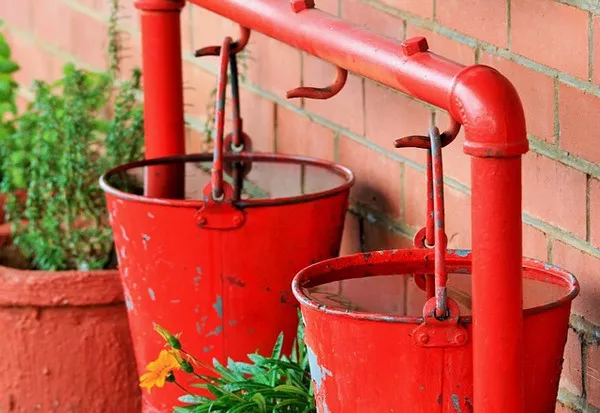In the realm of fire safety, it is essential to equip ourselves with the knowledge of various fire extinguishers and their specific applications. One such crucial fire extinguisher is the wet chemical extinguisher. This article aims to provide a comprehensive understanding of wet chemical extinguishers, including their composition, mechanism, and suitability for combating specific types of fires.
What is a Wet Chemical Extinguisher?
A wet chemical extinguisher is a specially designed fire extinguisher that uses a unique extinguishing agent formulated to combat specific classes of fires. It is primarily used to extinguish fires caused by cooking oils and fats, commonly found in commercial and residential kitchens. The wet chemical extinguisher is classified as Class K according to the National Fire Protection Association (NFPA) standard, indicating its specific suitability for suppressing kitchen fires.
Composition and Mechanism
The wet chemical extinguisher contains a special extinguishing agent typically based on potassium acetate or potassium citrate. These agents work by creating a chemical reaction with burning cooking oils or fats, resulting in the formation of a soapy-like foam. This foam effectively suppresses the fire, cools down the burning oil, and creates a barrier to prevent re-ignition.
The extinguisher is pressurized with nitrogen, which propels the wet chemical agent from the container when the extinguisher’s discharge valve is activated. The wet chemical agent is expelled in the form of a fine mist, ensuring even coverage and minimal risk of splashing or spreading the burning oil.
Suitability for Class K Fires
Class K fires involve combustible cooking media, such as vegetable oils, animal fats, and grease, which pose a unique challenge when ignited. These fires can quickly escalate due to the high temperatures involved in cooking processes, making them difficult to control with conventional fire extinguishers. The wet chemical extinguisher’s ability to react with cooking oils and fats and form a cooling foam significantly improves the chances of extinguishing the fire effectively and safely.
Additionally, wet chemical extinguishers can also be used on Class A fires, involving ordinary combustibles like wood, paper, and textiles. The foam generated by the agent helps smother the flames, preventing the fire’s spread.
Application and Usage
To utilize a wet chemical extinguisher effectively, it is crucial to understand the correct application technique. When dealing with a Class K fire in a kitchen setting, follow these steps:
1.Assess the situation: Ensure all occupants are aware of the fire and have evacuated the area, and assess the fire’s size and intensity.
2. Activate the alarm: Alert others in the vicinity by activating the fire alarm system.
3. Grab the extinguisher: Lift the wet chemical extinguisher by its handle and carry it to the fire location.
4. Maintain a safe distance: Stand at a safe distance from the fire, usually about 6 to 8 feet away, and aim the nozzle at the base of the flames.
5. Squeeze the handle: Firmly grip the extinguisher’s handle and squeeze it to release the wet chemical agent.
6. Sweep the fire: Move the extinguisher’s nozzle from side to side, sweeping the base of the flames thoroughly. Continue until the fire is extinguished.
7. Monitor the area: After the fire is out, keep an eye on the area to ensure there are no signs of re-ignition.
8. Evacuate if necessary: If the fire is not controllable or re-ignites, evacuate the area immediately and call the fire department.
Maintenance and Safety Considerations
Regular maintenance of wet chemical extinguishers is vital to ensure their effectiveness when needed. Routine inspections, servicing, and pressure checks should be conducted by trained professionals in accordance with local regulations and NFPA guidelines.
Safety precautions should be followed while using wet chemical extinguishers. Always position yourself upwind of the fire to avoid inhaling toxic smoke. Also, remember that wet chemical extinguishers are not suitable for electrical fires or flammable liquid fires (Class B), so it’s essential to identify the fire type correctly before attempting to use the extinguisher.
Conclusion
Wet chemical extinguishers play a crucial role in safeguarding commercial and residential kitchens, where the risk of Class K fires is prevalent. Understanding the composition, mechanism, and correct application of these extinguishers can make a significant difference in effectively combatting kitchen fires and preventing potential disasters. By adhering to proper maintenance and safety guidelines, individuals can ensure that wet chemical extinguishers remain a reliable and essential tool in their fire safety arsenal.

